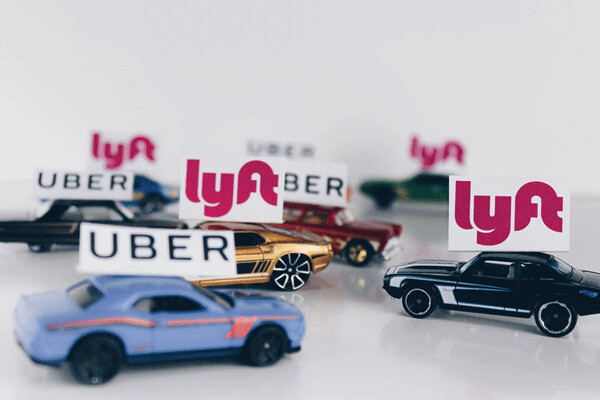Ridesharing via companies like Uber and Lyft good or bad for the environment?

Dear EarthTalk: Is ridesharing via companies like Uber and Lyft good or bad for the environment overall? Jeff Timotheos, Akron, OH
Between fuel, maintenance and insurance, owning a vehicle is expensive—even more so in cities like New York, where residents pay an annual average of $430 for parking alone. It may be no surprise why the affordable, convenient enterprise of ridesharing, whereby you use a smartphone app to arrange a ride in a privately-owned vehicle, has gained massive popularity in recent years and is expected to see even further growth (22.9 percent) in 2019. But is this shift from car ownership to ridesharing good for the environment overall?
Professor Daniela Rus of MIT’s Computer Science and Artificial Intelligence Laboratory, who focuses on ways to reduce traffic congestion and otherwise improve mobility in major cities, thinks so. “Ride-sharing services have enormous potential for positive societal impact with respect to congestion, pollution and energy consumption.”
Perhaps the biggest environmental benefit to ridesharing is carpooling. Uber’s “POOL” option puts riders in the same car, with each individual rider paying less. Last year, Uber drivers served 35 million riders in POOL trips. If these riders had instead driven by themselves, cities might have seen an additional 314 million vehicle miles and 82,000 metric tons of carbon dioxide emissions. Lyft has also set a goal to make shared rides account for 50 percent of all trips on the Lyft platform by the end of 2020.
Besides carpooling incentives, Uber is also expanding their app to provide customers with alternative forms of transport like electric bikes and buses. Their partnership with Jump Bikes, currently available in San Francisco, Sacramento and Santa Cruz, California and Washington, DC, can shift millions of trips from cars to bikes. “We realized that we shared Uber’s vision of multi-modal mobility and had the same goal of decreasing car ownership,” says Jump Bikes Founder and CEO Ryan Rzepecki. Uber is also working with transit agencies to help fill empty seats on buses and trains — which can be two to three times cleaner than a solo car drive—by allowing riders to book and use transit tickets in their app.
Additionally, in April 2018, Lyft announced their commitment to immediately offset the carbon emissions from all Lyft rides globally. Their first-year, multi-million-dollar investment will make Lyft one of the top voluntary purchasers of carbon offsets in the world. Lyft plans to help achieve carbon neutrality through the direct funding of emission mitigation efforts in the U.S., including emissions reductions in the automotive manufacturing process, renewable energy programs, forestry projects, and the capture of emissions from landfills. Lyft Co-Founders John Zimmer and Logan Green emphasize that this action is not the full solution, but a real step forward. “The more shared rides and clean vehicles on the platform, the fewer carbon offsets we will need to purchase,” they report.
Enhancing the environmental benefits of ridesharing is an emerging effort across the entire industry. This past February, leading transport and ridesharing companies that account for a staggering 77 million passenger trips per day signed on to Shared Mobility Principles for Livable Cities, a coalition committed to prioritizing people over vehicles and reducing emissions in an increasingly congested and polluted urban environment. “Working together, we can have a real impact on congestion, making our cities easier to get around and more enjoyable to live in,” said Joseph Okpaku, Vice President of Public Policy at Lyft.
CONTACTS: Uber, uber.com; Lyft, lyft.com.
EarthTalk® is produced by Roddy Scheer & Doug Moss for the 501(c)3 nonprofit EarthTalk. To donate, visit www.earthtalk.org. Send questions to: question@earthtalk.org.
